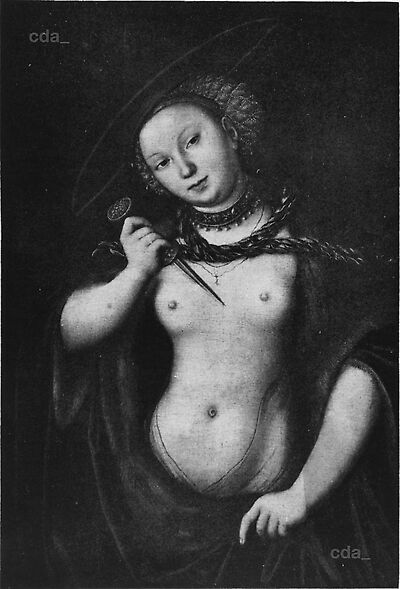The slight figure of Lucretia is shown from the front with her head inclined to the left side of the painting, while she gazes out at the viewer. Her right hand and holds a short dagger, which she points towards her body between her breasts. In her left lowered hand
The slight figure of Lucretia is shown from the front with her head inclined to the left side of the painting, while she gazes out at the viewer. Her right hand and holds a short dagger, which she points towards her body between her breasts. In her left lowered hand she holds the fur-trimmed cloak. She also wears a transparent undergarment that is wrapped around her hips. Her jewellery consists of an elaborately decorated neckband, a double large linked chain and two fine linked chains. Her hair is pinned up under a pearl snood and cover with a flat hat. The background is black.
According to the legend Lucretia lived in the 6th century BC and was the beautiful and virtuous wife of the roman Collatinus. The roman King's son - Sextus Tarquinius fell in love with her. During a stay in her house Sextus threatened to kill her and shame her honour if she did not surrender to him. After the rape Lucretia had her father and husband vow vengeance and then she stabbed herself. The event led to an uprising in which the royal family was overthrown and the Roman Empire became a Republic. Depictions of Lucretia who was seen as the epitomy of female virtue, chastity, fidelity and honour enjoyed great popularity, particularly in the 16th century. [Literature: Bierende 2002, Follak 2002, Livius 1909]
